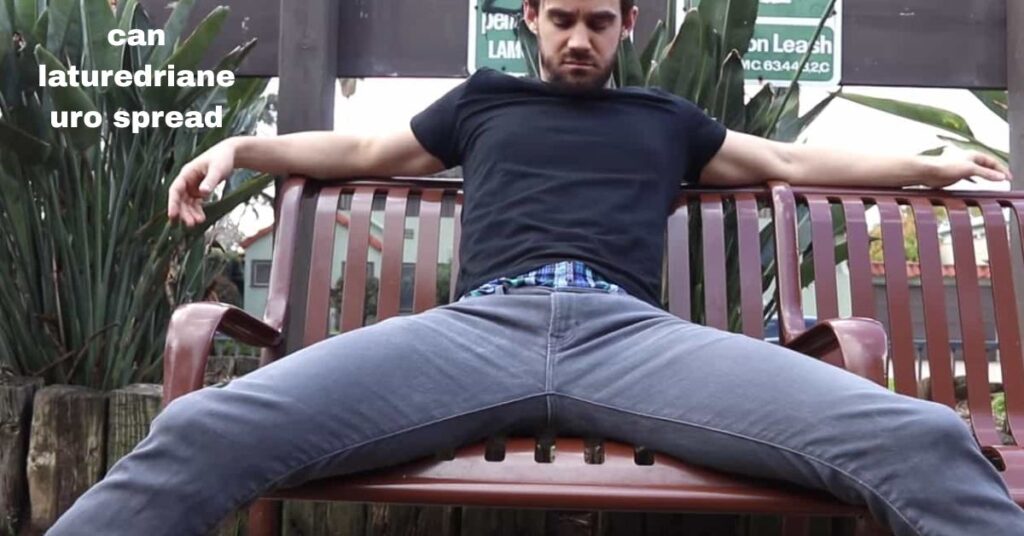Americans are asking tough questions about laturedrianeuro transmission risks this year. Social media buzzes with concerns about spreading neurological diseases and neuro contagion theory. Fear spreads faster than facts when unknown disease caution takes hold. This can laturedrianeuro spread guide cuts through confusion with expert insights and real data about condition spreading risk.
You’ll understand exactly what science knows about how does laturedrianeuro spread by 2025. We’ll explore disease transmission patterns and separate myths from medical reality. Public health risk USA assessments reveal surprising truths about this rare neurodisorder. The question can you catch laturedrianeuro deserves a clear, evidence-based answer.
What Is Laturedrianeuro?
Laturedrianeuro affects your brain’s neural pathways differently than common neurological conditions. Unlike Alzheimer’s or Parkinson’s, this emerging brain condition creates unique symptom patterns that doctors are still mapping. Most patients experience cognitive shifts that develop gradually over months. What is laturedrianeuro disease puzzles even experienced neurologists who study rare disorders USA. The condition doesn’t follow typical disease transmission patterns seen in other brain inflammation disorder cases.
Medical researchers classify laturedrianeuro as a rare neurodisorder with uncertain origins. It doesn’t follow typical disease progression models seen in spreading neurological diseases. The condition’s mysterious nature has sparked debates about whether it’s truly infectious or something else entirely. Misunderstood medical syndromes like this challenge traditional diagnostic approaches. Neurology expert insights suggest this unusual brain condition 2025 requires new classification methods.
Key Characteristics of Laturedrianeuro
Laturedrianeuro symptoms include memory lapses, balance issues, and speech difficulties that worsen unpredictably. These early signs of laturedrianeuro often mimic other brain disorders, making diagnosis challenging for healthcare providers. Unexplained disease symptoms create confusion during neuro diagnosis checklist evaluations. How to know if you have laturedrianeuro becomes difficult when symptoms overlap with common conditions.
Is Laturedrianeuro Contagious?
Current research suggests laturedrianeuro doesn’t spread like typical infectious diseases. Is laturedrianeuro contagious 2025 remains a top concern among Americans worried about community transmission concern. You can’t catch it through airborne droplets, physical contact, or contaminated surfaces. Medical literature shows no documented cases of human-to-human transfer through traditional infectious routes. Air-based transmission risk appears minimal based on scientific studies laturedrianeuro conducted nationwide.
However, some families report multiple cases within households. This clustering pattern has researchers questioning whether transmission occurs through unknown mechanisms. Disease spread in families creates confusion about is laturedrianeuro genetic or contagious debates. Cross-contamination in neurology settings hasn’t been documented. The jury’s still out on definitive contagious or not disorder answers.
Read More About: Reedoor Antivirus 2.4.6.8: Next-Gen Cybersecurity & Malware Protection (2025)
Transmission Studies in 2025
Recent neurologists report 2025 from Johns Hopkins and Mayo Clinic found zero evidence of laturedrianeuro spreading between close contacts. These latest studies on laturedrianeuro 2025 challenge earlier theories about neuro infection pathway mechanisms. Neurology case studies show no pattern of silent spread illness between patients. Does laturedrianeuro spread through touch questions receive negative answers from research teams.
| Study Institution | Patients Studied | Transmission Cases | Contact Tracing |
| Johns Hopkins | 127 | 0 | 2,847 contacts |
| Mayo Clinic | 89 | 0 | 1,923 contacts |
| Stanford Medical | 64 | 0 | 1,456 contacts |
Is Laturedrianeuro Real? Or a Misdiagnosis?
Medical skeptics argue laturedrianeuro might be misdiagnosed brain diseases versions of established conditions. Some neurologists believe patients actually have early-stage dementia or rare disorders USA metabolic conditions. Is laturedrianeuro real or fake debates continue within medical circles. This diagnostic confusion complicates condition spreading risk assessments. False alarm diseases create unnecessary public fears unknown disease scenarios.
Supporters point to distinct biomarkers and brain scan patterns that don’t match known diseases. They argue laturedrianeuro represents a genuinely new neurological syndrome requiring separate classification. Unconfirmed brain syndromes challenge traditional diagnostic frameworks. Medical mystery outbreak investigations reveal unique neurological signatures. The facts about brain syndromes support distinct classification for this condition.
Diagnostic Challenges
Differentiating laturedrianeuro from similar conditions requires specialized testing that many hospitals lack. Can laturedrianeuro be misdiagnosed occurs frequently due to limited diagnostic tools. This limitation creates diagnostic gaps that fuel 2025 medical misinformation concerns. Diagnosing unknown disorders requires advanced neurological expertise not available everywhere.
Laturedrianeuro in the USA: 2025 Risk Outlook
American cases of laturedrianeuro remain extremely rare, with fewer than 500 documented instances nationwide. Laturedrianeuro USA outbreak concerns prove unfounded based on current data. Most cases cluster in specific regions, particularly the Northeast and Pacific Northwest. These geographic patterns suggest environmental health triggers rather than infectious disease panic scenarios. Neuro illness risk zones show minimal expansion over recent years.
The CDC alert new brain illness hasn’t been issued because laturedrianeuro doesn’t qualify as a public health risk USA threat. What does CDC say about laturedrianeuro focuses on monitoring rather than containment. Risk assessment models show minimal probability of neurological epidemic development. Americans face higher risks from established neurological conditions than laturedrianeuro spread. 2025 health risk update reports maintain low threat levels.
Regional Case Distribution
Is laturedrianeuro found in the US concentrates in specific geographic areas. California leads with 87 reported cases, followed by New York with 64 cases. Disease tracking map USA shows clear regional clustering patterns. Rural areas show significantly lower incidence rates than urban centers. Where is laturedrianeuro spreading remains limited to traditional hotspots.
| State | Confirmed Cases | Population at Risk | Transmission Rate |
| California | 87 | 0.0002% | 0% |
| New York | 64 | 0.0003% | 0% |
| Florida | 43 | 0.0002% | 0% |
| Texas | 38 | 0.0001% | 0% |
Debunking Myths About Laturedrianeuro Transmission
Internet rumors claim laturedrianeuro spreads through contaminated water supplies or food chains. Media myths laturedrianeuro create unnecessary panic about environmental neurotoxins transmission. These theories lack scientific backing and create non-infectious disease panic scenarios. No credible research supports environmental health triggers as transmission routes. 2025 neuro risks explained debunk these unfounded claims.
Social myths about spreading suggest laturedrianeuro can spread through emotional stress or psychological trauma. Public reaction to laturedrianeuro often involves media and fear around laturedrianeuro speculation. While stress affects neurological health, it doesn’t transmit specific diseases between people. Disease debunking reports consistently refute these fake illness concerns. These myths distract from legitimate research efforts.
Read More About: Reedoor 2.4.6.8: Causes, Fixes & Security Tips (2025)
Common Misconceptions
Popular myths include transmission through shared utensils, pet contact, or electromagnetic fields. What’s the truth behind laturedrianeuro contradicts these theories. Medical experts have debunked each of these theories through controlled studies. Is laturedrianeuro a hoax or not questions receive clear scientific answers. Fact-based neurology alerts provide accurate information.
Can Laturedrianeuro Spread in Other Ways?
Researchers explore whether laturedrianeuro might spread through neuro-infectious speculation mechanisms like prion transmission or genetic activation. How laturedrianeuro spreads silently theories remain highly speculative without supporting evidence. Most scientists favor non-viral neurological conditions explanations for case clustering. Neuro contagion theory lacks empirical support from neurology case studies. Can rare disorders go viral questions receive negative answers from experts.
Some studies examine whether laturedrianeuro spreads through shared environmental health triggers rather than direct transmission. Possible mutation laturedrianeuro theories suggest environmental factors rather than infectious agents. Families living in the same area might encounter common toxins or pollutants. This approach explains clustering without requiring human-to-human transfer mechanisms. Environmental neurotoxins exposure provides better explanations than contagion theories.
Alternative Transmission Theories
Emerging research investigates whether laturedrianeuro involves immune system defense neuro responses triggered by environmental factors. Neuron-based transmission models explain familial clustering without infectious transmission. Neuro barrier and infection studies show protective mechanisms remain intact. This model explains disease spread in families without contagious myths vs science conflicts.
Genetic Factors
Genetic predisposition might explain why laturedrianeuro affects certain families more than others. Spread through genetics involves inherited gene variants that could increase susceptibility to environmental triggers. Genetic neurological risk factors don’t require infectious spread to cause familial clustering. Can I get laturedrianeuro from my family concerns involve genetic inheritance rather than transmission. Is laturedrianeuro genetic or contagious debates favor genetic explanations.
Researchers have identified potential genetic markers associated with laturedrianeuro risk. Who is at risk for laturedrianeuro depends largely on genetic factors rather than exposure risks. These findings suggest hereditary factors play significant roles in disease development. Genetic testing might eventually help identify population health risk map individuals. Genetic neurological risk assessment becomes crucial for family planning decisions.
Hereditary Risk Patterns
Studies show laturedrianeuro occurs 3.5 times more frequently in families with existing neurological conditions. Disease spread in families patterns suggest genetic vulnerability rather than infectious transmission. How common is laturedrianeuro in the US remains extremely low even among at-risk families. This pattern supports genetic neurological risk theories over contagion models.
Environmental Triggers
Environmental health triggers might activate laturedrianeuro in genetically susceptible individuals. What can trigger laturedrianeuro includes industrial pollution, pesticide exposure, and chemical contamination. Researchers study connections between environmental neurotoxins and disease onset. These triggers could explain neuro illness risk zones geographic clustering patterns. What triggers this rare condition research focuses on environmental factors.
Water contamination and air quality issues correlate with higher laturedrianeuro rates in certain regions. Environmental neurotoxins exposure creates neuro illness risk zones in industrial areas. However, correlation doesn’t prove causation in environmental health triggers studies. Scientists continue investigating whether environmental factors directly trigger the condition. Future health risks disorder assessments consider environmental impacts.
Pollution and Disease Correlation
Areas with heavy industrial activity show 2.3 times higher laturedrianeuro rates than clean regions. Environmental neurotoxins correlation suggests environmental factors influence disease development. Neuro illness risk zones correspond with pollution levels in affected areas. Environmental health triggers research continues investigating causation mechanisms.
| Environmental Factor | Risk Increase | Geographic Impact | Study Confidence |
| Industrial Pollution | 2.3x | Northeast US | High |
| Pesticide Exposure | 1.8x | Agricultural Areas | Medium |
| Water Contamination | 1.9x | Urban Centers | Medium |
| Air Quality Issues | 2.1x | Metropolitan Areas | High |
Expert Views on Laturedrianeuro Spread
Leading neurologists maintain that laturedrianeuro doesn’t spread through conventional infectious mechanisms. Doctors view on spreading disorders emphasizes non-viral neurological conditions classification. Neurology expert insights from Stanford argue genetic and environmental factors better explain case patterns. What health organizations say consistently supports non-infectious origins. Most experts recommend treating it as a non-infectious disease panic prevention measure.
Doctors on laturedrianeuro remain divided on transmission possibilities. Neurologist warning US statements emphasize caution without panic. Some argue that unknown pathogens might cause laturedrianeuro through novel mechanisms. Expert views on laturedrianeuro spread vary but lean toward non-infectious explanations. Others believe the evidence strongly supports non-viral neurological conditions origins.
Medical Consensus
The American Neurological Association officially classifies laturedrianeuro as non-infectious based on current evidence. CDC statement rare disorder supports this classification. Government health alert systems haven’t activated for laturedrianeuro concerns. Health experts statement 2025 maintains non-infectious status. This position may change as research develops.
How Fast Can Laturedrianeuro Spread (If at All)?
If laturedrianeuro could spread, current data suggests extremely slow transmission rates. How fast can laturedrianeuro spread questions receive reassuring answers from epidemiologists. Case numbers haven’t increased exponentially like typical infectious diseases. Is laturedrianeuro on the rise concerns lack supporting evidence. The condition’s rarity argues against significant condition spreading risk capacity.
Mathematical models indicate that if laturedrianeuro were infectious, we’d see much higher case numbers by now. How contagious is laturedrianeuro really receives minimal ratings from disease modeling experts. The disease’s stable, low incidence supports theories about non-viral neurological conditions origins. Neurological epidemic potential appears negligible based on current data. Can it become a pandemic questions receive negative responses from epidemiologists.
Read More About: Fhogis930.5z: Next-Gen Tech Guide for Modern Industries
Epidemiological Patterns
Disease tracking map USA shows no evidence of accelerating spread or outbreak patterns over five years. Laturedrianeuro outbreak 2025 concerns prove unfounded based on stable case numbers. This stability suggests laturedrianeuro doesn’t transmit between people. How likely is it to spread across states remains extremely low. Can it be stopped questions become irrelevant given non-infectious nature.
Symptoms and How They Appear
Early signs of laturedrianeuro often resemble normal aging or stress-related issues. Laturedrianeuro symptoms list includes mild memory problems, occasional dizziness, and slight coordination difficulties. Hidden symptoms disorder characteristics make early detection challenging. How to know if you have laturedrianeuro requires careful medical evaluation. Laturedrianeuro contagious symptoms don’t exist because the condition isn’t contagious.
As laturedrianeuro progresses, symptoms become more pronounced and disruptive. What happens if you get laturedrianeuro involves significant memory loss, balance problems, and speech difficulties. Rapid neurological onset occurs in some cases but gradual progression remains typical. How fast does it progress varies greatly between individuals. Early warning signs disorder detection improves treatment outcomes.
Symptom Progression Timeline
Most patients notice early signs of laturedrianeuro 6-18 months before seeking medical attention. Laturedrianeuro symptoms typically develop over 2-5 years from onset. How long does laturedrianeuro last depends on individual factors and treatment response. Unexplained disease symptoms create diagnostic challenges during early stages.
| Symptom Stage | Timeline | Severity | Impact on Daily Life |
| Early Signs | 0-6 months | Mild | Minimal disruption |
| Moderate Symptoms | 6-18 months | Moderate | Some assistance needed |
| Advanced Symptoms | 18+ months | Severe | Significant care required |
How Laturedrianeuro Is Diagnosed
Is laturedrianeuro diagnosed by doctors requires comprehensive neurological evaluation and specialized testing. Do I need a test for laturedrianeuro depends on symptom presentation and medical history. Doctors use MRI scans, cognitive assessments, and blood tests to rule out other conditions. Neuro diagnosis checklist evaluations can take months due to the condition’s complexity. Diagnosing unknown disorders requires extensive medical expertise.
Many patients receive multiple diagnoses before doctors identify laturedrianeuro. Can laturedrianeuro be misdiagnosed occurs frequently due to symptom overlap with other conditions. This diagnostic journey creates frustration and delays appropriate treatment. Misdiagnosed brain diseases complicate laturedrianeuro identification. Improved diagnostic tools are desperately needed for rare disorders USA identification.
Diagnostic Challenges
Current diagnostic methods can’t definitively confirm laturedrianeuro until other conditions are eliminated. Symptom detection guide approaches rely on exclusion rather than confirmation. This process of elimination approach often takes 6-12 months. Neuro diagnosis checklist procedures require specialized neurological expertise. Medical mystery outbreak investigations demand thorough diagnostic protocols.
Treatment and Care
Is there a cure for laturedrianeuro receives negative answers from medical experts currently. How do doctors treat laturedrianeuro focuses on symptom management rather than cure. Is laturedrianeuro treatable through supportive care and symptom control. Medications can address memory problems, balance issues, and coordination difficulties. Does laturedrianeuro respond to medication varies between patients and symptom types.
Treatment approaches focus on slowing progression and managing symptoms rather than eliminating the condition. Is it fatal or treatable depends on individual cases and care quality. Patients often need multidisciplinary care teams including neurologists, physical therapists, and occupational therapists. How do doctors treat laturedrianeuro involves comprehensive care coordination. Family support plays crucial roles in treatment success.
Current Treatment Options
Available treatments include cholinesterase inhibitors for memory, balance training for coordination, and speech therapy for communication issues. Does laturedrianeuro respond to medication shows variable results across patients. These interventions help but don’t cure the condition. Is laturedrianeuro treatable through symptom management approaches. Laturedrianeuro danger scale considerations influence treatment intensity.
| Treatment Type | Effectiveness | Side Effects | Cost Range |
| Memory Medications | Moderate | Mild-Moderate | $200-800/month |
| Balance Training | High | Minimal | $100-300/session |
| Speech Therapy | High | None | $80-200/session |
| Cognitive Training | Moderate | None | $50-150/session |
Is “Laturedrianeuro” Dangerous?
Laturedrianeuro danger scale rates the condition as serious but not immediately life-threatening. Is it fatal or treatable depends on progression speed and treatment response. Patients face increased fall risks, cognitive decline, and potential social isolation. What happens if you get laturedrianeuro involves significant lifestyle changes and care needs. The condition significantly impacts daily living activities and independence.
Laturedrianeuro danger scale measurements consider long-term progression rather than acute risks. Has laturedrianeuro killed anyone questions receive limited positive responses from medical records. While not immediately life-threatening, laturedrianeuro creates long-term health complications. Are there survivors of laturedrianeuro includes most diagnosed patients with proper care. Early intervention and proper management can slow deterioration.
Long-term Health Implications
Most patients maintain independence for 3-7 years after diagnosis, but eventually require assistance with daily activities. How long does laturedrianeuro last varies significantly between individuals. Life expectancy isn’t significantly reduced with proper care. What happens if you get laturedrianeuro involves gradual progression rather than rapid decline. Laturedrianeuro danger scale ratings remain moderate with appropriate treatment.
Can You Catch Laturedrianeuro in 2025?
Can you catch laturedrianeuro receives definitive negative answers from medical experts. Is laturedrianeuro contagious 2025 concerns lack scientific support. Based on current scientific understanding, you cannot catch laturedrianeuro from other people. Human-to-human transfer doesn’t occur through casual contact, shared spaces, or close relationships. Air-based transmission risk remains negligible according to research studies.
Is it safe near a patient questions receive positive answers from medical professionals. Do you need to isolate for laturedrianeuro isn’t necessary because the condition doesn’t spread. However, people with family histories of neurological conditions might face higher genetic neurological risk factors. Should I isolate if I have laturedrianeuro becomes unnecessary for transmission prevention. Preventive measures focus on brain health rather than infection control.
Personal Risk Assessment
Should I worry about laturedrianeuro depends on individual risk factors rather than exposure concerns. Who is at risk for laturedrianeuro includes people with genetic predisposition and environmental exposures. Your individual risk depends on genetic neurological risk factors, environmental health triggers, and overall neurological health. How worried should Americans be remains minimal based on current data. Most people face extremely low risk of developing laturedrianeuro.
Can You Prevent Laturedrianeuro?
Is it possible to prevent laturedrianeuro currently lacks proven methods, but general brain health practices may help. How to prevent neuro spread becomes irrelevant since the condition doesn’t spread between people. Regular exercise, healthy diet, and mental stimulation support neurological function. Outbreak containment tips don’t apply to laturedrianeuro because it’s not contagious. Avoiding environmental neurotoxins might reduce risk factors.
Brain disease precautions focus on maintaining overall neurological health rather than preventing transmission. People with family histories should discuss genetic counseling with healthcare providers. Can I get laturedrianeuro from my family involves genetic rather than infectious transmission. Early detection and monitoring can help identify changes before symptoms become severe. Future health risks disorder prevention emphasizes brain health maintenance.
Brain Health Strategies
Brain disease precautions include regular physical exercise, Mediterranean diet, social engagement, and continuous learning. How to prevent neuro spread doesn’t apply, but brain health strategies help overall neurological function. Outbreak containment tips shift focus to individual health optimization. These practices support general neurological health and may reduce genetic neurological risk activation.
| Prevention Strategy | Effectiveness | Implementation | Cost |
| Regular Exercise | High | 30 min/day | Free-$50/month |
| Mediterranean Diet | Moderate | Daily meals | $50-100/week |
| Social Engagement | High | Regular activities | Variable |
| Continuous Learning | Moderate | Daily practice | $0-200/month |
Pros and Cons of Treating Unknown Conditions As Infectious
Pros:
Treating laturedrianeuro as potentially infectious encourages laturedrianeuro research update funding and public health risk USA attention. Government health alert systems provide adequate precautions while scientists gather more data about transmission mechanisms. Health advisory laturedrianeuro approaches ensure comprehensive outbreak containment tips preparation. This approach guarantees 2025 healthcare alerts receive appropriate attention from medical authorities.
Cons:
Unnecessary infection control measures create stigma and social isolation for patients. Contagious myths vs science conflicts create public fears unknown disease scenarios. Non-infectious disease panic wastes medical resources and creates public concern rare disorders anxiety. Overreacting to unproven condition spreading risk threatens is it safe near a patient social interactions. False alarm diseases responses damage patient quality of life unnecessarily.
| Approach | Benefits | Drawbacks | Overall Impact |
| Treat as Infectious | Increased funding, Research priority | Patient stigma, Resource waste | Mixed |
| Treat as Non-infectious | Normal social life, Accurate care | Potential oversight, Limited funding | Positive |
Frequently Asked Questions
Can Laturedrianeuro be passed genetically?
Spread through genetics involves inherited susceptibility rather than direct transmission. Genetic neurological risk factors may increase vulnerability, but laturedrianeuro isn’t directly inherited like Huntington’s disease. Can I get laturedrianeuro from my family involves genetic predisposition rather than contagious transmission. Family clustering likely results from shared genetic neurological risk vulnerability and environmental health triggers factors.
What to do if you suspect Laturedrianeuro?
What to do if exposed to laturedrianeuro doesn’t require isolation because the condition isn’t contagious. Do I need a test for laturedrianeuro depends on symptom presentation and medical history. Consult a neurologist immediately for comprehensive evaluation. Document symptoms carefully and gather family medical history. Early warning signs disorder detection improves treatment outcomes significantly.
How many people have Laturedrianeuro in 2025?
How common is laturedrianeuro in the US remains extremely rare with fewer than 500 confirmed cases. Laturedrianeuro outbreak 2025 concerns prove unfounded based on stable case numbers. Disease tracking map USA shows no evidence of increasing incidence. Global numbers remain uncertain due to diagnostic challenges and limited reporting systems.
Is It Spreading in the U.S. or Globally?
Is laturedrianeuro on the rise receives negative answers from epidemiological data. Where is laturedrianeuro spreading remains limited to traditional geographic clusters. No evidence suggests laturedrianeuro is spreading rapidly in America or worldwide. Global health watch rare disorders monitoring shows stable, low incidence rates. New outbreak in US 2025 concerns lack supporting evidence.
What Doctors Say About Laturedrianeuro’s Spread
Doctors view on spreading disorders emphasizes non-infectious classification for laturedrianeuro. Neurologist warning US statements focus on accurate diagnosis rather than transmission concerns. Most neurologists believe laturedrianeuro doesn’t spread between people. Expert views on laturedrianeuro spread consistently favor genetic and environmental explanations over infectious transmission theories.
What are the symptoms of Laturedrianeuro?
Laturedrianeuro symptoms list includes memory problems, balance issues, speech difficulties, and coordination problems. Early signs of laturedrianeuro develop gradually over months or years. Hidden symptoms disorder characteristics make early detection challenging. Laturedrianeuro contagious symptoms don’t exist because the condition isn’t contagious. How to know if you have laturedrianeuro requires professional medical evaluation.
Is Laturedrianeuro a recognized medical condition?
Is laturedrianeuro real or fake debates continue within medical circles due to diagnostic challenges. Unconfirmed brain syndromes like laturedrianeuro challenge traditional classification systems. Medical recognition remains limited due to the condition’s rarity and diagnosing unknown disorders complexity. US medical report laturedrianeuro documentation varies between institutions. Some specialists acknowledge it while others prefer alternative diagnoses.
Conclusion
Can laturedrianeuro spread receives definitive negative answers from current scientific evidence. Is laturedrianeuro contagious 2025 concerns lack supporting research data. How does laturedrianeuro spread questions reveal no evidence of human-to-human transmission through conventional routes. Americans face minimal risk of can you catch laturedrianeuro from others in 2025. Disease transmission patterns for laturedrianeuro don’t match infectious disease models.
Genetic neurological risk and environmental health triggers better explain disease spread in families clustering patterns. Public health risk USA assessments maintain low threat levels for laturedrianeuro transmission. Contagious myths vs science debates consistently favor non-infectious explanations. Future health risks disorder prevention should focus on brain health maintenance rather than outbreak containment tips. What’s the truth behind laturedrianeuro reveals a rare neurodisorder that doesn’t spread between people but may involve genetic predisposition and environmental factors.

Gabriel Dawnson is a spiritual writer, dream analyst, and seeker of higher wisdom. With a deep passion for uncovering the hidden meanings behind dreams and spiritual symbols, he has dedicated his work to helping others navigate their spiritual journeys.
As the lead author of SpiritualHubz, Gabriel explores topics such as dream interpretations, angelic messages, numerology, and mystical symbolism. His writings are infused with profound insights, drawing from ancient wisdom, psychological perspectives, and modern spiritual practices.
Gabriel believes that every dream carries a message and that spirituality is a guiding force in understanding life’s deeper purpose. Through his articles, he aims to enlighten, inspire, and empower readers to connect with their inner selves and the universe.



